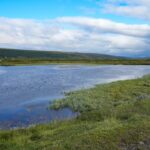Support our educational content for free when you purchase through links on our site. Learn more
🏔️ Dyatlov Pass Incident: 12 Chilling Mysteries Uncovered (2025)
Imagine waking up in the dead of winter, surrounded by the silent, icy peaks of the Ural Mountains, only to discover your hiking group has vanished—leaving behind a tent slashed open from the inside and footprints leading into the freezing abyss. This is the haunting reality of the Dyatlov Pass Incident, a 1959 tragedy that has baffled experts and conspiracy theorists for over six decades. From bizarre injuries to unexplained radioactive traces, this article unpacks 12 unsolved mysteries and the latest scientific insights that might finally shed light on what really happened.
Whether you’re a history buff, a mystery lover, or an adventurous soul dreaming of visiting the infamous Dyatlov Pass, we’ll guide you through the background, the chilling expedition details, official investigations, and the wildest theories—from avalanches to alien encounters. Ready to unravel one of history’s coldest enigmas? Let’s dive in!
Key Takeaways
- The Dyatlov Pass Incident involved nine experienced hikers who mysteriously died under strange and violent circumstances in the Ural Mountains in 1959.
- The group’s tent was cut open from the inside, and some victims suffered severe internal injuries without external wounds.
- Radioactive contamination on clothing and missing body parts add layers of mystery still unexplained by natural causes alone.
- Modern forensic studies lean toward an avalanche or katabatic wind scenario but cannot fully explain all anomalies.
- The incident has inspired numerous books, documentaries, and conspiracy theories, keeping the mystery alive in popular culture.
- For those inspired to explore, visiting Dyatlov Pass requires serious preparation and respect for the harsh environment.
Gear up for your own adventure:
- 👉 Shop Winter Hiking Gear on: Amazon | REI | The North Face Official Website
Dive deeper into the chilling saga and decide for yourself what really happened on that fateful night!
Table of Contents
- ⚡️ Quick Tips and Facts About the Dyatlov Pass Incident
- 🗻 The Mysterious Ural Mountains Tragedy: Dyatlov Pass Background
- 🥾 The Fateful Expedition: Who Were the Dyatlov Group?
- 🔍 Search and Discovery: How the Tragedy Unfolded
- 🕵️♂️ Official Investigation and Soviet Era Secrecy
- 🧩 12 Unsolved Mysteries and Bizarre Clues From Dyatlov Pass
- 🌪️ Natural Phenomena Theories: Avalanche, Katabatic Winds, and More
- 👽 Paranormal and Conspiracy Theories: UFOs, Yeti, and Secret Weapons
- 🧪 Modern Forensics and New Evidence: What Science Reveals
- 🎥 Dyatlov Pass in Popular Culture: Books, Documentaries, and Films
- 🧭 Visiting Dyatlov Pass Today: Tips for Adventure Seekers
- 📚 Recommended Reading and Research Sources
- ✅ Conclusion: What Have We Learned From Dyatlov Pass?
- 🔗 Recommended Links for Further Exploration
- ❓ Frequently Asked Questions About the Dyatlov Pass Incident
- 📑 Reference Links and Credible Sources
⚡️ Quick Tips and Facts About the Dyatlov Pass Incident
Welcome to the chilling saga of the Dyatlov Pass Incident—a mysterious tragedy that has baffled historians, scientists, and conspiracy theorists alike for over six decades. At History Hidden™, we’ve dug deep into the snowdrifts of the Ural Mountains to bring you the most fascinating facts and tips about this enigmatic event.
- Date of Incident: February 1–2, 1959
- Location: Kholat Syakhl (“Dead Mountain”), Northern Ural Mountains, Russia
- Victims: Nine experienced hikers from the Ural Polytechnic Institute
- Survivor: Yuri Yudin, who left early due to illness
- Tent Condition: Cut open from the inside, abandoned in subzero temperatures
- Cause of Death: Hypothermia and traumatic injuries from an unknown “compelling natural force”
- Notable Injuries: Skull fractures, chest trauma, missing eyes and tongue in some victims
- Official Soviet Conclusion: Death caused by an overwhelming natural force
- Modern Theories: Avalanche, katabatic winds, infrasound panic, secret military tests, or paranormal activity
- Radiation: Some clothing showed traces of radioactive contamination
- Discovery: Bodies found scattered over months, some under 4 meters of snow
💡 Pro Tip: If you want to explore the site yourself, be prepared for extreme weather and rugged terrain. The Dyatlov Pass is not for the faint-hearted!
For a quick primer, check out the History Channel’s Dyatlov Pass overview and the detailed Wikipedia entry.
Ready to unravel the mystery? Let’s dive into the chilling details!
🗻 The Mysterious Ural Mountains Tragedy: Dyatlov Pass Background
The Dyatlov Pass Incident is named after Igor Dyatlov, the 23-year-old engineering student who led a group of nine hikers on a challenging winter trek through the Northern Urals. The goal? To reach Otorten Mountain, about 10 kilometers north of the fatal campsite.
Historical Context and Setting
- Soviet Era Exploration: In 1959, winter expeditions were a rite of passage for many Soviet students, especially those in technical institutes like UPI (Ural Polytechnic Institute).
- Terrain: The Ural Mountains are notorious for unpredictable weather, steep slopes, and dense forests. Kholat Syakhl, meaning “Dead Mountain” in the local Mansi language, was already steeped in local folklore warning against trespassing.
- Expedition Name: The group called their journey the “21st Congress of the Communist Party” expedition, symbolizing youthful vigor and Soviet pride.
Why This Incident Still Fascinates
- The hikers were experienced Grade II skiers aiming for Grade III certification. They were no amateurs.
- The tent was found slashed open from the inside, suggesting a sudden, terrifying event forced them to flee.
- The bizarre injuries and missing body parts defy simple explanations.
- The Soviet government’s initial investigation was inconclusive, fueling decades of speculation and conspiracy theories.
At History Hidden™, we believe understanding the background is key to appreciating the full mystery. For more folklore and legends tied to the Urals, check out our Folklore and Legends category.
🥾 The Fateful Expedition: Who Were the Dyatlov Group?
Let’s meet the brave souls who embarked on this ill-fated journey. The group consisted of nine hikers, mostly students in their early 20s, plus a 38-year-old sports instructor. Here’s a quick rundown:
| Name | Age | Role | Cause of Death |
|---|---|---|---|
| Igor Dyatlov | 23 | Group Leader | Hypothermia |
| Yuri Doroshenko | 21 | Hiker | Hypothermia |
| Lyudmila Dubinina | 20 | Hiker (Female) | Severe chest trauma |
| Georgiy Krivonishenko | 23 | Hiker | Hypothermia |
| Alexander Kolevatov | 24 | Hiker | Violent death (trauma) |
| Zinaida Kolmogorova | 22 | Hiker (Female) | Hypothermia |
| Rustem Slobodin | 23 | Hiker | Hypothermia |
| Nikolai Thibeaux-Brignolles | 23 | Hiker | Skull fracture (violent death) |
| Semyon Zolotaryov | 38 | Sports Instructor | Severe chest trauma |
| Yuri Yudin | 21 | Hiker (Survivor) | Left early due to illness |
Expedition Highlights
- The group was highly skilled, with previous experience in winter hiking and skiing.
- They planned a difficult route through the Urals, intending to reach Otorten Mountain.
- Yuri Yudin had to leave early due to sciatica, ironically saving his life.
Their camaraderie and skill make the tragedy even more perplexing. Experienced hikers don’t just abandon camp in subzero weather without a dire reason!
For more on the human stories behind such mysteries, explore our Mythology Stories category.
🔍 Search and Discovery: How the Tragedy Unfolded
When the group failed to report back by February 12, a search party was dispatched on February 20. What they found was chilling:
- February 26: The group’s tent was discovered on Kholat Syakhl. It was half torn down and covered with snow, cut open from the inside.
- First five bodies: Found scattered between 300 and 1500 meters from the tent, some in underwear, near a fire pit.
- Remaining four bodies: Discovered on May 4 in a ravine under four meters of snow, with severe injuries.
The Search Timeline
| Date | Event |
|---|---|
| Jan 23, 1959 | Expedition begins |
| Feb 12, 1959 | Expected return date (missed) |
| Feb 20, 1959 | Search party dispatched |
| Feb 26, 1959 | Tent discovered |
| Feb 27-Mar 6, 1959 | First five bodies found |
| May 4, 1959 | Remaining four bodies found |
The discovery of the bodies months apart, and in such strange conditions, only deepened the mystery. The fact that some victims were found with missing eyes and tongues added a macabre twist that still haunts investigators.
You can read more about the search and discovery on DyatlovPass.com.
🕵️♂️ Official Investigation and Soviet Era Secrecy
The Soviet investigation was swift but inconclusive, wrapped in layers of secrecy and conflicting reports.
Key Findings
- The tent was cut open from the inside, indicating a panic-driven escape.
- Six hikers died of hypothermia, while three suffered fatal physical trauma (skull fractures, chest injuries).
- Some clothing showed radioactive contamination.
- The official cause: “a compelling natural force” caused the deaths.
Investigation Challenges
- The case files were classified and partially lost during the Soviet era.
- Forensic reports were inconsistent, with some experts questioning the accuracy of autopsies.
- The presence of radiation and unexplained injuries led to speculation about secret military involvement.
At History Hidden™, we find the Soviet secrecy a key piece of the puzzle—without transparency, rumors and conspiracy theories flourish.
For a detailed dive into the investigation, check out the History.com article.
🧩 12 Unsolved Mysteries and Bizarre Clues From Dyatlov Pass
Let’s get to the juicy stuff! Here are 12 baffling mysteries that keep the Dyatlov Pass incident alive in the minds of mystery buffs:
- Tent Cut from Inside: Why would experienced hikers slash their own tent and flee into freezing conditions?
- Missing Eyes and Tongue: Two victims had their eyes missing; one was missing her tongue. No signs of animal predation.
- Severe Internal Injuries: Some bodies had chest fractures comparable to a car crash, but no external wounds.
- Radiation on Clothing: Several items showed radioactive contamination, raising questions about military tests.
- No Signs of Struggle: No evidence of a fight or attack by humans or animals.
- Burns and Flesh in Mouth: One victim had burns and had bitten off part of his own hand.
- Footprints in Snow: Footprints showed some were barefoot or in socks, walking calmly, not running.
- Paradoxical Undressing: Victims were found partially undressed despite freezing temperatures.
- Missing Money and Documents: Some hikers’ money and passports were missing, but valuables were left behind.
- Unusual Light in Sky: Witnesses reported bright lights or explosions in the sky near the time of the incident.
- Delayed Discovery of Bodies: Four bodies were found months later, buried under deep snow.
- Discrepancies in Autopsy Reports: Some forensic reports were allegedly altered or lost.
These clues have spawned countless theories, from avalanches to secret weapons to extraterrestrial encounters.
Want to dive deeper? Our Folklore and Legends section has some fascinating takes on the paranormal theories.
🌪️ Natural Phenomena Theories: Avalanche, Katabatic Winds, and More
Many experts lean toward natural explanations for the tragedy, though none fit perfectly.
Avalanche Theory
- The most widely accepted natural cause.
- A slab avalanche could have forced the hikers to flee suddenly.
- However, the tent was pitched on a gentle slope, and no clear avalanche debris was found.
- Footprints did not show signs of panic or rapid escape.
Katabatic Winds
- Powerful, cold downslope winds could have created terrifying conditions.
- These winds might have caused infrasound, inducing panic or hallucinations.
- The hikers may have fled to build makeshift shelters.
Other Natural Theories
- Hypothermia-induced paradoxical undressing: Victims remove clothes due to a false sensation of warmth.
- Snow slab pressure: Could explain internal injuries without external trauma.
- Animal attacks: Largely discounted due to lack of bite marks or struggle signs.
At History Hidden™, we recommend considering these natural phenomena seriously, but also recognizing their limitations in explaining all the evidence.
👽 Paranormal and Conspiracy Theories: UFOs, Yeti, and Secret Weapons
If you love a good conspiracy, Dyatlov Pass is a goldmine! Here’s a quick tour of the wildest theories:
- UFO or Extraterrestrial Encounter: Witnesses reported strange lights; some speculate alien abduction or attack.
- Yeti or Mansi Tribal Attack: Local legends speak of mysterious creatures or hostile tribes.
- Secret Military Tests: The area was near Soviet military zones; some believe the group was caught in weapons testing or radiation experiments.
- KGB Involvement: Some suggest the hikers stumbled upon classified operations and were silenced.
- Psychological Phenomena: Infrasound or mass hysteria caused panic and irrational behavior.
While these theories are tantalizing, they often lack solid evidence. But hey, they keep the story alive and spark endless debates!
🧪 Modern Forensics and New Evidence: What Science Reveals
Recent studies have tried to apply modern science to this decades-old mystery:
- 2019 Russian Investigation: Concluded an avalanche was the most likely cause, with survivors succumbing to hypothermia.
- 2021 Swiss Study (EPFL & ETH Zürich): Modeled a slab avalanche that could cause the injuries and tent damage.
- Forensic Re-examinations: Confirmed trauma consistent with high-impact forces, but no clear weapon or attacker.
- Radiation Analysis: Some clothing showed beta radiation, possibly linked to nearby nuclear facilities like Mayak.
Despite advances, many questions remain unanswered. The lack of eyewitnesses and missing original evidence hamper definitive conclusions.
At History Hidden™, we encourage readers to weigh the scientific findings alongside the historical context for a balanced view.
🎥 Dyatlov Pass in Popular Culture: Books, Documentaries, and Films
The Dyatlov Pass Incident has inspired a wealth of media, fueling public fascination:
- Books:
- “Dead Mountain: The Untold True Story of the Dyatlov Pass Incident” by Donnie Eichar
- “1079. The Overwhelming Force of Dyatlov Pass” (Russian Detective Award winner)
- Documentaries:
- “The Dyatlov Pass Incident” (Netflix)
- “Devil’s Pass” (2013) — a found-footage horror film loosely based on the event
- Podcasts and YouTube Channels: Numerous deep dives analyze theories and evidence.
These works blend fact and fiction, sometimes blurring lines but always keeping the mystery alive.
If you want to explore the folklore and mythic elements, don’t miss our Folklore and Legends and Mythology Stories collections.
🧭 Visiting Dyatlov Pass Today: Tips for Adventure Seekers
Feeling brave? The Dyatlov Pass has become a pilgrimage site for thrill-seekers and mystery lovers.
What You Need to Know
- Location: Northern Ural Mountains, Russia — remote and challenging terrain.
- Best Time to Visit: Summer months (June to September) for safer conditions.
- Permits: Required for travel in some areas; check local regulations.
- Guided Tours: Recommended for safety and navigation.
- What to Bring: Warm clothing, survival gear, GPS, and a healthy dose of respect for the mountain.
Safety Tips
- Weather can change rapidly; be prepared for snow even in summer.
- The terrain is rugged; physical fitness is essential.
- Leave no trace—respect the site and the memory of the hikers.
For gear recommendations, check out our partner sites for winter hiking essentials:
- 👉 Shop Winter Hiking Gear on: Amazon | REI | The North Face Official Website
📚 Recommended Reading and Research Sources
To truly become a Dyatlov Pass aficionado, here are some must-read sources:
| Title | Author | Type | Link |
|---|---|---|---|
| Dead Mountain | Donnie Eichar | Book | Amazon |
| 1079. The Overwhelming Force of Dyatlov Pass | Russian Researchers | Book | Official Site |
| The Dyatlov Pass Incident | History.com | Article | History.com |
| Dyatlov Pass Incident | Wikipedia | Article | Wikipedia |
These sources provide a balanced mix of scientific analysis, historical context, and cultural impact.
✅ Conclusion: What Have We Learned From Dyatlov Pass?
After trekking through the snowy labyrinth of facts, theories, and mysteries surrounding the Dyatlov Pass Incident, one thing is crystal clear: this tragedy remains one of history’s most perplexing puzzles. From the bizarre injuries and tent slashed from within to the radioactive clothing and unexplained bright lights in the sky, the Dyatlov group’s fate challenges simple explanations.
✅ What we can confidently say:
- The hikers were experienced and prepared, making their sudden flight into the freezing wilderness all the more baffling.
- Natural causes like avalanches or katabatic winds provide plausible but incomplete answers.
- The official Soviet investigation left many questions unanswered, and secrecy fueled decades of speculation.
- Modern forensic science has shed light on some injuries but cannot fully explain the missing body parts or the exact sequence of events.
- Paranormal and conspiracy theories, while captivating, lack solid evidence but reflect the cultural impact of the incident.
❌ What remains elusive:
- The exact cause of the hikers’ panic and fatal injuries.
- Why some victims were found partially undressed despite freezing temperatures.
- The nature of the “compelling natural force” cited by investigators.
At History Hidden™, we recommend embracing the mystery as a lesson in humility before nature’s power and the limits of human knowledge. Whether you lean toward natural phenomena, secret military experiments, or something stranger, the Dyatlov Pass Incident invites us to keep asking questions—and never stop exploring.
🔗 Recommended Links for Further Exploration
Ready to dive deeper or gear up for your own adventure? Check out these resources and products:
-
Books on Dyatlov Pass:
-
Winter Hiking Gear:
-
Documentaries and Media:
- The Dyatlov Pass Incident (Netflix)
- Devil’s Pass (2013) on streaming platforms
❓ Frequently Asked Questions About the Dyatlov Pass Incident
What were the circumstances surrounding the Dyatlov group’s disappearance?
The nine hikers set out on January 23, 1959, for a challenging winter trek in the Ural Mountains. They planned to reach Otorten Mountain and return by February 12. When they failed to report back, a search party was launched on February 20. The hikers’ tent was found abandoned and slashed from the inside, with the group fleeing into subzero temperatures inadequately dressed. The circumstances suggest a sudden, terrifying event forced them out of their shelter.
What were the strange injuries found on the Dyatlov group’s bodies?
The injuries varied widely: six died from hypothermia, while three suffered severe trauma including skull fractures and chest injuries comparable to a car crash. Some victims were missing eyes and tongues, and one had burns and had bitten off part of his own hand. These injuries puzzled investigators because they didn’t match typical animal attacks or human violence.
Was the Dyatlov Pass incident a result of a yeti or wild animal attack?
While local folklore mentions mysterious creatures, there is no forensic evidence supporting an animal attack. No bite marks or signs of struggle were found. The injuries and missing body parts do not align with known animal behavior, making this theory more myth than fact.
What is the theory behind the alleged military experiment involvement in the Dyatlov Pass incident?
Some speculate the group was caught in secret Soviet military tests involving radiation or weapons, partly due to radioactive traces on clothing and the area’s proximity to military zones. However, no conclusive evidence confirms this, and official documents remain classified or incomplete. This theory remains popular among conspiracy circles but lacks definitive proof.
Can the Dyatlov Pass incident be explained by natural causes such as an avalanche or landslide?
Avalanche is the leading natural explanation. A slab avalanche could have forced the hikers to flee suddenly, causing trauma and hypothermia. However, the tent’s location on a gentle slope and lack of avalanche debris challenge this theory. Katabatic winds and infrasound-induced panic are also considered. Natural causes explain many aspects but not all anomalies.
What role did the strange tent and footprints play in the Dyatlov Pass incident investigation?
The tent was found cut open from the inside, indicating the hikers fled in panic. Footprints showed some were barefoot or in socks, walking calmly rather than running, suggesting no immediate chase. These clues hint at a sudden, overwhelming threat but leave the nature of that threat unknown.
Were the Dyatlov group’s cameras and film developed, and what did they reveal?
Yes, the group’s cameras were recovered and developed. The photos show normal expedition scenes and the tent before abandonment. No images directly explain the incident, but they provide valuable context about the group’s condition and environment before tragedy struck.
Is the Dyatlov Pass incident still an unsolved mystery, and what are the latest theories and investigations?
Absolutely. Despite renewed investigations, including a 2019 Russian inquiry attributing the deaths to an avalanche, many questions remain. New forensic studies and modeling continue to refine natural explanations, but anomalies like missing body parts and radiation keep alternative theories alive. The incident remains a captivating, unsolved mystery.
📑 Reference Links and Credible Sources
- Dyatlov Pass Incident – Wikipedia
- Dyatlov Pass Incident – History.com
- DyatlovPass.com – In-depth Research and Case Files
- Donnie Eichar’s Dead Mountain on Amazon
- REI Winter Hiking Gear
- The North Face Official Website
Explore more mysteries and legends with History Hidden™ at our Folklore and Legends and Mythology Stories categories.




